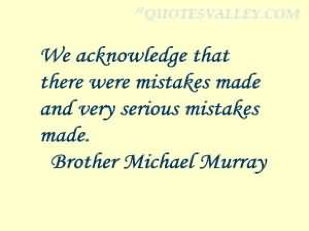Recently we were conducting a sales workshop on selling to strategic accounts. During one of the breaks a participants (Ken) asked us to have lunch with him so that he could discuss an account problem and gain our insight.
Background & Situation
During lunch Ken explained that he had recently been asked to take over a large and very strategic account. To ensure confidentiality we will call the account ABC. His firm, which we will call ACME, makes the delivery device for ABC, and has enjoyed 100% of ABC’s business. In fact ABC is ACME’s largest customer, accounting for several million dollars per year in revenue.
Ken then explained that for the past few years ACME has had problems providing quality products to ABC. In spite of several meetings between ABC and ACME, the manufacturing problems persisted and ABC has become very displeased with ACME’s overall product quality.
Over time, ABC has become so concerned that they placed a technical specialist in ACME’s manufacturing facility to try and assist in resolving the manufacturing problems. Up until this occurred, ACME basically had their “head in the sand”…refusing to acknowledge a customer problem. ABC put up with these problems because ACME was the only supplier available for the product required.
Yesterday he received a call from ABC saying they were going to give 20% of their future business to an alternate vendor. He further related that he is now very concerned that ACME will lose the balance of the business and that he now has ACME’s President involved. He asked for our thoughts and insight.
The Discussion
We began by agreeing with his concerns about losing the account and the remainder of ABC’s business. All of the warning signs were present; ABC was an unhappy customer. As these warning signs escalated, nothing was done by ACME that satisfied ABC’s perception of the problem. Now ABC is taking action to protect their business. While the situation appeared to be dire, we have seen several similar situations that have been turned around quickly using a joint planning and review technique.
We suggested the following action plan to discover a solution while repairing the frayed relationship.
-
Immediately acknowledge the current situation & past mistakes:
 This takes brute honesty by both parties. ACME needs to admit the mistakes that were made and determine where, within ABC’s organization, the relationship is in jeopardy. ACME should determine whether the ABC relationship is weakened or severely damaged and identify all of the individuals involved. This will require an open and honest discussion. Further, it will require an empirical evaluation tool to pinpoint exactly the areas that must improve and how ABC feels about ACME as an organization. In these situations, there are likely to be individuals from ACME that need to be replaced.
This takes brute honesty by both parties. ACME needs to admit the mistakes that were made and determine where, within ABC’s organization, the relationship is in jeopardy. ACME should determine whether the ABC relationship is weakened or severely damaged and identify all of the individuals involved. This will require an open and honest discussion. Further, it will require an empirical evaluation tool to pinpoint exactly the areas that must improve and how ABC feels about ACME as an organization. In these situations, there are likely to be individuals from ACME that need to be replaced.
-
Determine the source of the problem:
Understanding the root cause of the problem is paramount to creating a resolution and preventing a re-occurrence. This can be done in the following manner. First, assign members from ACME and ABC to work jointly to determine the validity of all claims. Second, create a process that will fairly judge all aspects of the claims. Third, focus on understanding the problem, not assigning blame. During this step, it is important that the process focuses on root cause analysis and sticks to factual and measurable data such as defect rates, order cycle and test results. Consider the use of qualitative measurements that could suggest trouble. While it’s tough to get at root cause without emotions intervening, it is important to conduct a dispassionate analytic review.
-
Implement corrective actions designed to reduce errors and improve relationships:
 Once the project team has rendered its assessment and recommendations, share findings with key members of both organizations. Provide total transparency. Implement a plan satisfactory to all parties. Focus on changes that will forecast product errors. Adopt procedural changes to improve communication. At this juncture, it’s important to identify a cross-functional team from ACME’s organization to align directly with ABC personnel. This will improve communication and foster relationships. A key member of the ACME account team needs to be a corporate un-blocker. This individual must have the power and ability to adjust resources within ACME to remove obstacles to providing immediate and sustainable improvement.
Once the project team has rendered its assessment and recommendations, share findings with key members of both organizations. Provide total transparency. Implement a plan satisfactory to all parties. Focus on changes that will forecast product errors. Adopt procedural changes to improve communication. At this juncture, it’s important to identify a cross-functional team from ACME’s organization to align directly with ABC personnel. This will improve communication and foster relationships. A key member of the ACME account team needs to be a corporate un-blocker. This individual must have the power and ability to adjust resources within ACME to remove obstacles to providing immediate and sustainable improvement.
-
Monitor solutions and relationship:
 Once the jointly developed plan has been implemented, it is important to monitor its success and ensure that business relationship are improving. Schedule meetings between both organizations on a regular basis. Everyone on your account team must be relentless in resolving problems and avoiding re-occurrences. ABC should be asked to complete and return unbiased customer surveys that measure ACME’s improvement. This feedback will ensure that each member of the ACME account team is providing value.
Once the jointly developed plan has been implemented, it is important to monitor its success and ensure that business relationship are improving. Schedule meetings between both organizations on a regular basis. Everyone on your account team must be relentless in resolving problems and avoiding re-occurrences. ABC should be asked to complete and return unbiased customer surveys that measure ACME’s improvement. This feedback will ensure that each member of the ACME account team is providing value.
Parting Thoughts
Remember that facts and documentation are important but…your customer’s perception is everything.
Relationships are the foundation for customer-supplier relationship. This situation could have been avoided had a strategic account planning process been in place. Consider the following five questions:
- Are any of your strategic accounts in the same or similar position as ABC?
- Are you taking for granted your strategic accounts?
- What affect would it have on your market position if one of your strategic accounts defected and your company lost a significant portion or all of the revenue?
- If we asked your best accounts to tell us exactly how they felt about doing business with you what grade would you receive? Would it an A, B, C, D or F?
- What actions should you take immediately to protect and insulate the business you have fought so hard to earn?
As always we welcome your thoughts and input. Let’s start a discussion and elevate the sales profession with a thoughtful, civil and informative discourse.


